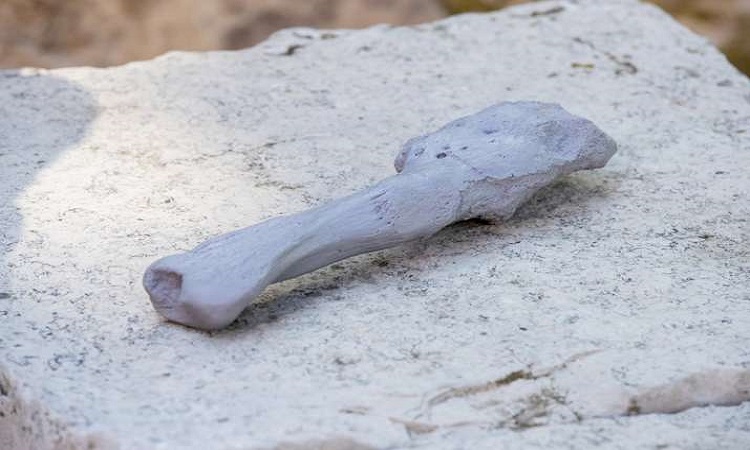A collaboration between researchers at the Royal Ontario Museum (ROM) and McMaster University led to the diagnosis of malignant cancer in a dinosaur. It’s a first!
The animal in question is a Centrosaurus apertus, a horned dinosaur that lived during the Cretaceous Period, 76 to 77 million years ago. Discovered in 1989 in Alberta (Canada), his fibula (leg bone) showed a visibly deformed extremity. Initially, paleontologists determined it was evidence of an old fracture that was healing. Re-analysis of the bone using modern techniques ultimately led to a different diagnosis.
Aggressive cancer
As part of this work, published in The Lancet Oncology, the researchers first cut the fossil bone into thin sections, with the aim of examining it at the cellular level. Powerful CT reconstruction tools then made it possible to isolate the presence of an old growing tumor: osteosarcoma.
The researchers then compared the fossil to the fibula of a healthy dinosaur of the same species. Then they did the same with a human fibula with osteosarcoma. In doing so, they were able to confirm the diagnosis.
“The diagnosis of aggressive cancer like this in dinosaurs is difficult to make and requires medical expertise and multiple levels of analysis to be properly identified,” says Mark Crowther, professor of pathology and molecular medicine at the ‘McMaster University. “Here we show the indisputable signature of advanced bone cancer in a 76 million-year-old horned dinosaur, the first of its kind. It’s very exciting”.
Note that no malignant cancer has ever been documented in dinosaurs before. Last year, German researchers identified the presence of another yet older malignant tumor, 240 million years old. At that time, the first dinosaurs and mammals were only just beginning to spread across the planet. However, it had been isolated from the fossilized femur of a primitive turtle.
Protecting the herd
Surprisingly, it was obviously not this cancer that killed this dinosaur. These bones have indeed been found among many other fossils of the same species. And according to the researchers, all of these animals died at the same time, possibly victims of a flash flood.
However, the fact of living surrounded by his family is undoubtedly what allowed him to live so long.
“The tibia has aggressive cancer at an advanced stage. Cancer would have had paralyzing effects on the individual and made him very vulnerable to the formidable predators of the time, “said Dr. David Evans, co-author of the study. “The fact that this herbivorous dinosaur lived in a large protective herd may have allowed it to survive longer than it normally would with such a devastating disease.”
Beyond simple diagnosis, making links between human diseases and those of the past could help scientists better understand their evolution. This study also shows the importance of re-examining the bones present in museum collections with modern techniques.




